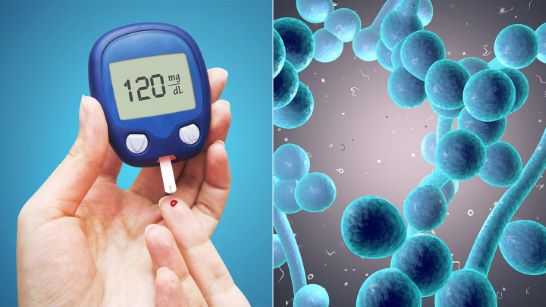What is a yeast infection?
A yeast infection is a fungal infection that is also called candidiasis. The most common type of candidiasis is vaginal yeast infection, which is so common that 3 in 4 women will have one in their lifetime. It causes itchiness, irritation, vaginal discharge, and burning during urination or intercourse. Yeast infections cannot cause any permanent damage, even if left untreated; however, they do cause a lot of discomfort and should be treated immediately.
Men can contract yeast infections of the penis, though these are much less common than vaginal yeast infections.
Symptoms of yeast infection in men include:
- Redness,
- Itching,
- Swelling,
- Pain around the penis, and discharge with a strong smell.
Men who are not circumcised are at higher risk of getting yeast infections.
Can diabetes cause yeast infections?
Yeast infections are caused when there is an unequal balance of yeast and bacteria in the vagina, which causes the body to produce too much yeast.
Possible causes of this disruption include:
- Certain antibiotics
- Certain birth control bills
- Hormone therapy
- An impaired immune system
- Sexual activity
- Pregnancy
- Diabetes
How does diabetes cause infections?
While yeast infections are very common among women, women with Type 1 or Type 2 diabetes are at even higher risk of contraction. Though scientists are unable to pinpoint the exact connection between diabetes and yeast infections, there are many theories. First, patients with Type 2 diabetes have higher blood sugar levels than those who do not have the condition, and higher sugar levels can cause yeast infections.
It is normal for yeast organisms to be present in healthy flora. When these organisms exist in normal levels, symptoms are not present. However, a yeast infection develops when there is an overgrowth of yeast organisms. Elevated levels of blood sugar affect the entire body, and for women that includes the mucus of the vagina and vulva. Sugar is an excellent energy source for yeast and elevated blood sugar levels in the vaginal area encourage the growth of yeast.
Another factor that may contribute to diabetic yeast infections is a compromised immune system. Studies show a connection between diabetes and immune dysfunction. If the immune system is not functioning adequately, the overgrowth of yeast may go unchecked. Additionally, once yeast colonizes an area, it becomes easier for the infection to recur. A woman with diabetes not only has a higher risk of developing a yeast infection, but also of the infection recurring.
Why do diabetes medications cause genital yeast infections?
Some diabetes medications, such as dapagliflozin and metformin, may cause yeast infections in both men and women. This could be because hyperglycemia, or high blood sugar, is a possible side effect of many diabetes drugs. If a diabetes medication causes hyperglycemia, it may put the patient at higher risk of developing a yeast infection.
How to prevent candidiasis in diabetes
Yeast infections are more likely to occur if blood sugar levels are not properly managed. The best way to lower your risk of getting a yeast infection if you have diabetes is to control your blood glucose levels.
Additional preventative measures include:
- Avoiding tight clothing that could make the genital area more moist
- Wearing cotton underwear, or another material that helps control moisture levels
- Changing out of wet clothing like swimsuits or exercise clothes as soon as possible
- Avoiding sitting in hot baths or hot tubs
- Avoiding vaginal spray or douches
- Avoiding scented menstrual products like pads and tampons
- Changing pads or tampons frequently
How to treat yeast infection with diabetes
Yeast infections are typically treated topically with a cream, ointment, or suppository, though oral doses are available for more severe infections. The most popular medications include butoconazole (Gynazole-1), clotrimazole (Gyne-Lotrimin), miconazole (Monistat 3), and terconazole (Terazol 3). Treatment usually lasts up to 7 days, depending on the medication.
However, studies have shown that yeast infections in women with diabetes are caused by a specific species of a non-albicans species of fungus called Candida glabrata. Though the symptoms of the infection are the same, the treatment plan differs.
Women with diabetes who develop yeast infections may respond better to a longer duration of treatment than the most common medications provide. It is typically recommended that patients use a long-course, non-fluconazole azole suppository regimen that lasts between 7 and 14 days.
Disclaimer: Please note that the contents of this community article are strictly for informational purposes and should not be considered as medical advice. This article, and other community articles, are not written or reviewed for medical validity by Canadian Insulin or its staff. All views and opinions expressed by the contributing authors are not endorsed by Canadian Insulin. Always consult a medical professional for medical advice, diagnosis, and treatment.


